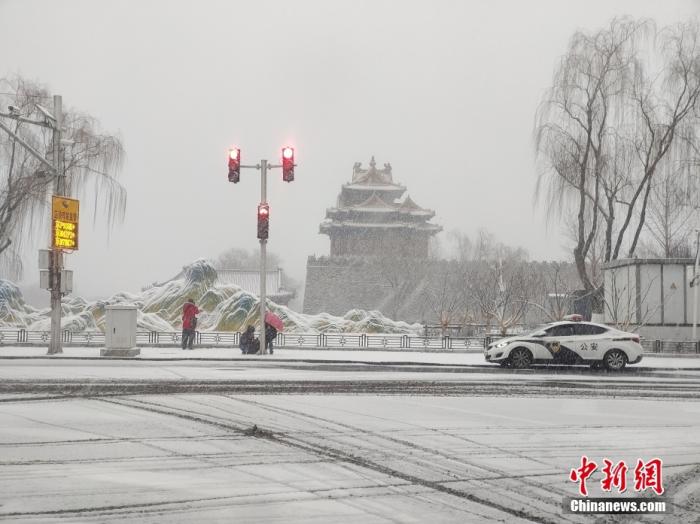China News Service, Beijing, February 13 (Reporter Chen Hang) The reporter learned from the Beijing Meteorological Department that due to the combination of the eastward-moving high-altitude trough and the low-level easterly wind, snow began to fall in the Beijing-Tianjin-Hebei region on the night of the 12th.
The Beijing Meteorological Observatory issued a yellow warning signal for road icing at 17:40 on the 12th, and a yellow warning signal for heavy fog at 7:35 on the 13th.
A Blizzard blue warning signal was issued at 8:45 on the 13th.
On February 13, Beijing saw its first snowfall in the Year of the Tiger.
Image source: Visual China
Zhang Yingxin, chief forecaster of the Beijing Meteorological Observatory, said that snow began to fall in Beijing at 2:00 on the 13th. As of 9:00 on the 13th, the average snowfall in the city was 1.6 mm, and the average in the urban area was 1.9 mm. The maximum snowfall occurred in Changping Dalinggou 5.8 mm.
The snow depth in most parts of the city is 1 to 3 cm.
Zhang Yingxin said that due to the impact of snowfall, the visibility in the plain area is less than 1 kilometer, and the local visibility is less than 500 meters; the visibility in the mountains is less than 500 meters, and the local visibility is less than 100 meters.
Snowfall gradually weakened and ended on the 14th
Zhang Yingxin said that it is expected that there will still be significant snowfall in Beijing until 23:00 on the 13th, and the snowfall will gradually weaken and end after 3:00 on the 14th.
The city's average snowfall is 4-8 mm (the new snow depth is 4-8 cm); the west and north are relatively obvious, and the local area can reach more than 10 mm (the new snow depth is 6-9 cm).
The Beijing Meteorological Observatory issued a yellow warning signal for road icing at 17:40 on the 12th, and a yellow warning signal for heavy fog at 7:35 on the 13th.
A Blizzard blue warning signal was issued at 8:45 on the 13th.
Significant snow and icy roads
Zhang Yingxin said that there was obvious snowfall on the 13th, the visibility was poor, the surface temperature was low, there was obvious snow accumulation and road icing, and it was necessary to prevent adverse effects on transportation, power transmission and communication.
Heavy snowfall can easily cause branches to break, so it is necessary to remove snow in time, and take protective measures for ancient trees and street trees; reinforce temporary facilities such as simple houses, temporary structures, agricultural greenhouses, and fences, and clear snow in time; transfer dangerous places in time personnel to a safe area.
In addition, the temperature has dropped significantly compared with the previous period, which will bring certain pressure on urban heating, power supply, and gas supply. Relevant departments are requested to do a good job in energy scheduling and supply guarantee.
The temperature continues to be low and the body feels cold. The public is advised to keep warm and cold, and beware of colds and cardiovascular and cerebrovascular diseases.
In addition, coal-fired heating residents need to pay attention to prevent carbon monoxide poisoning.
(Finish)

